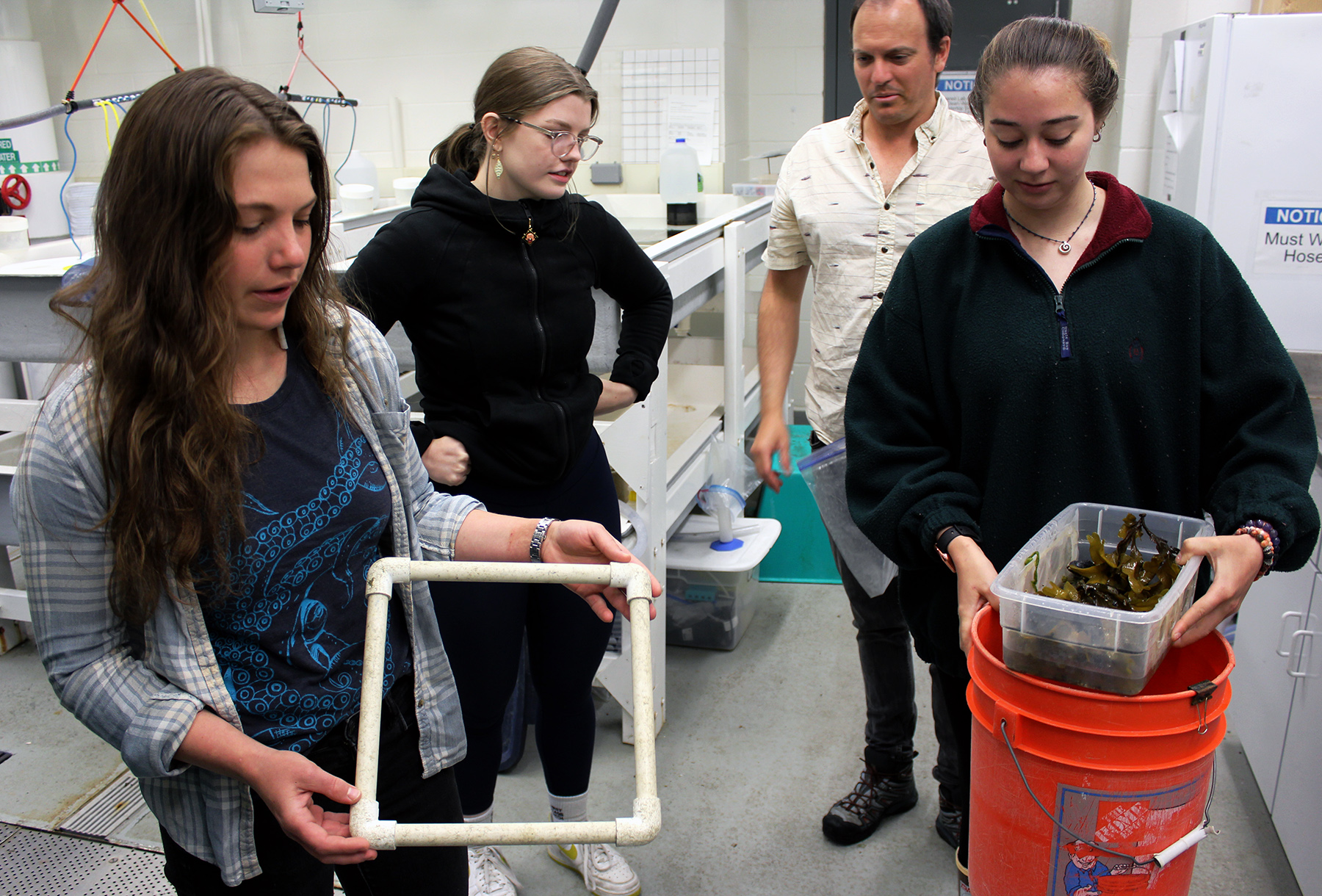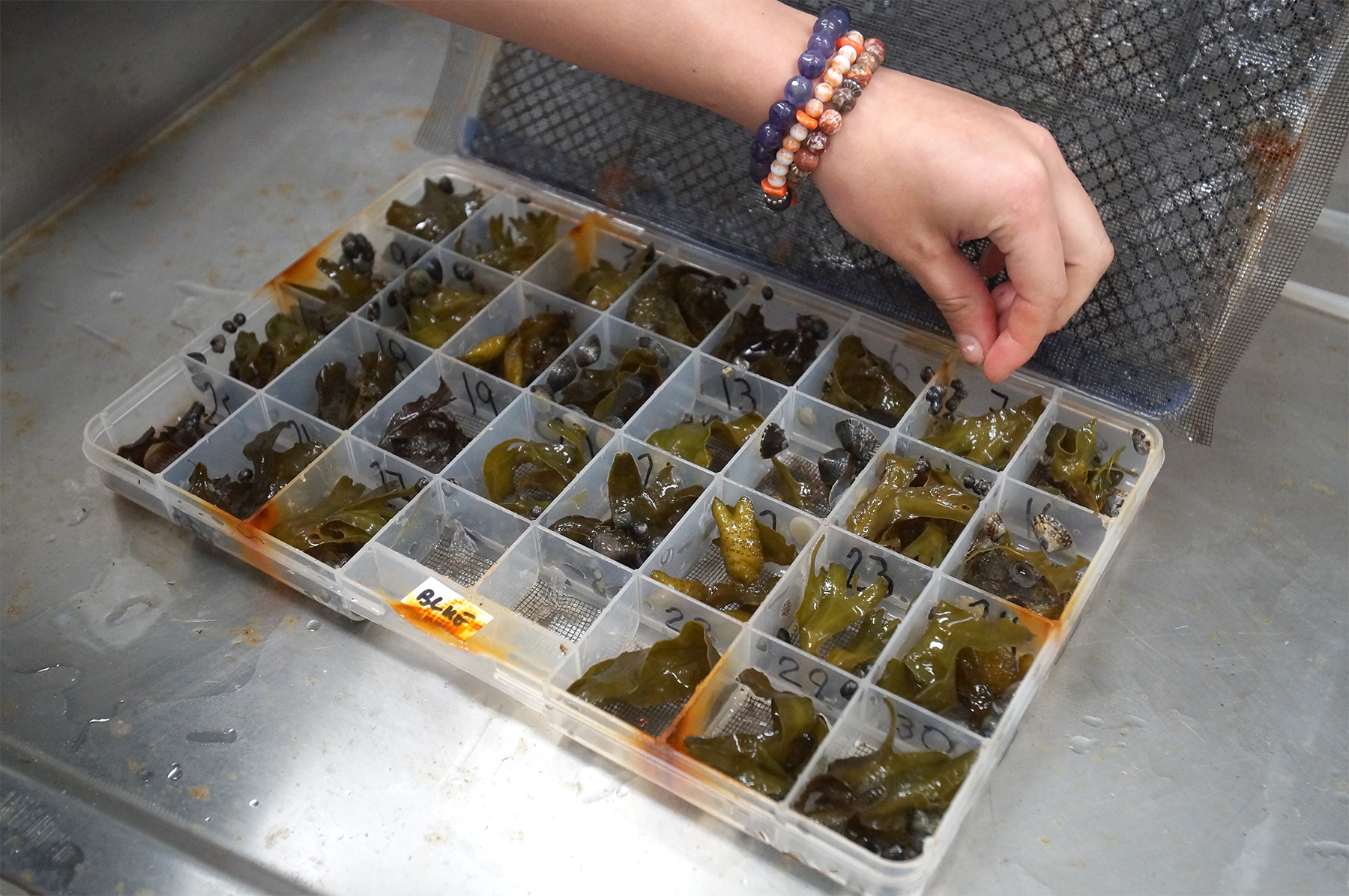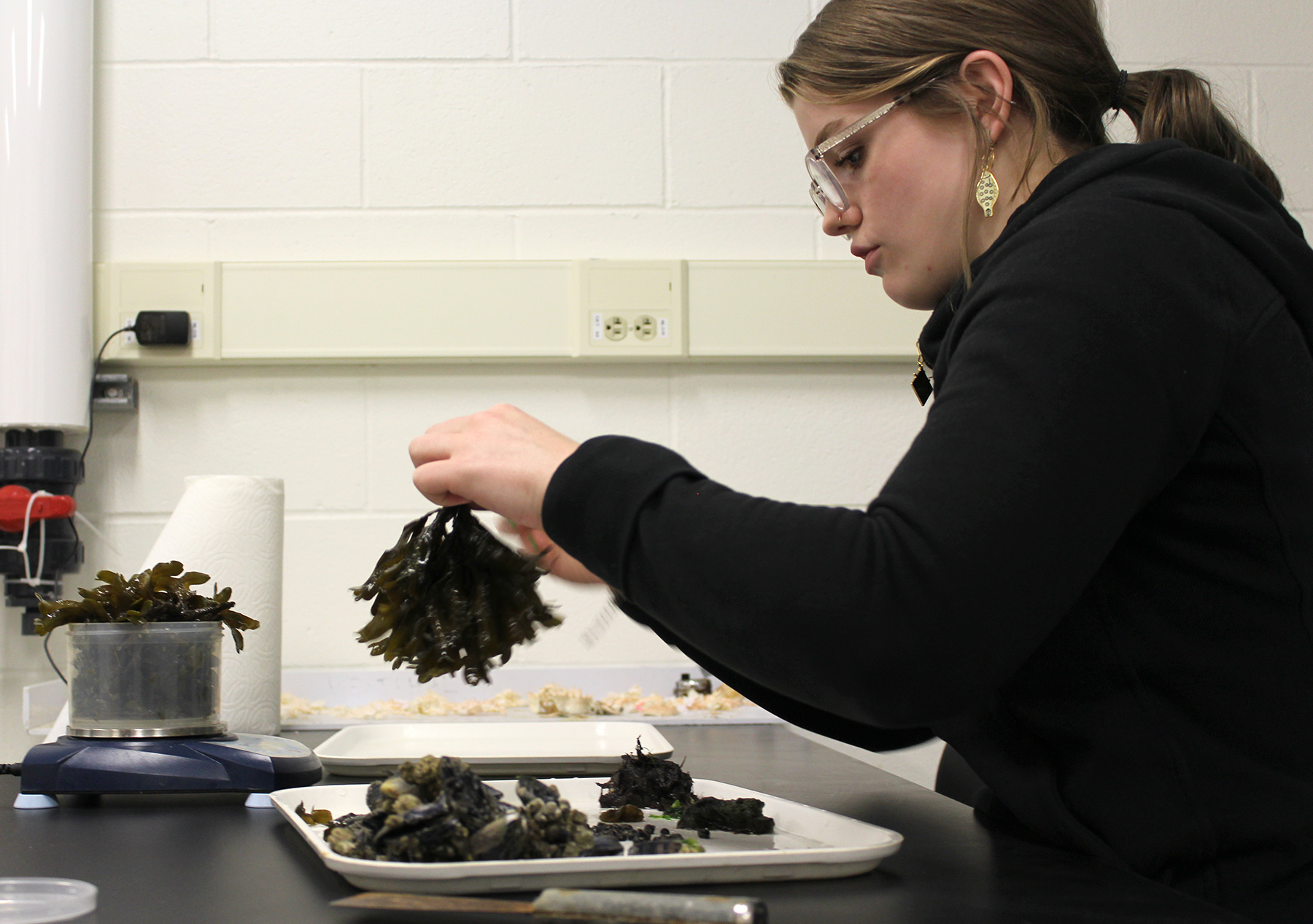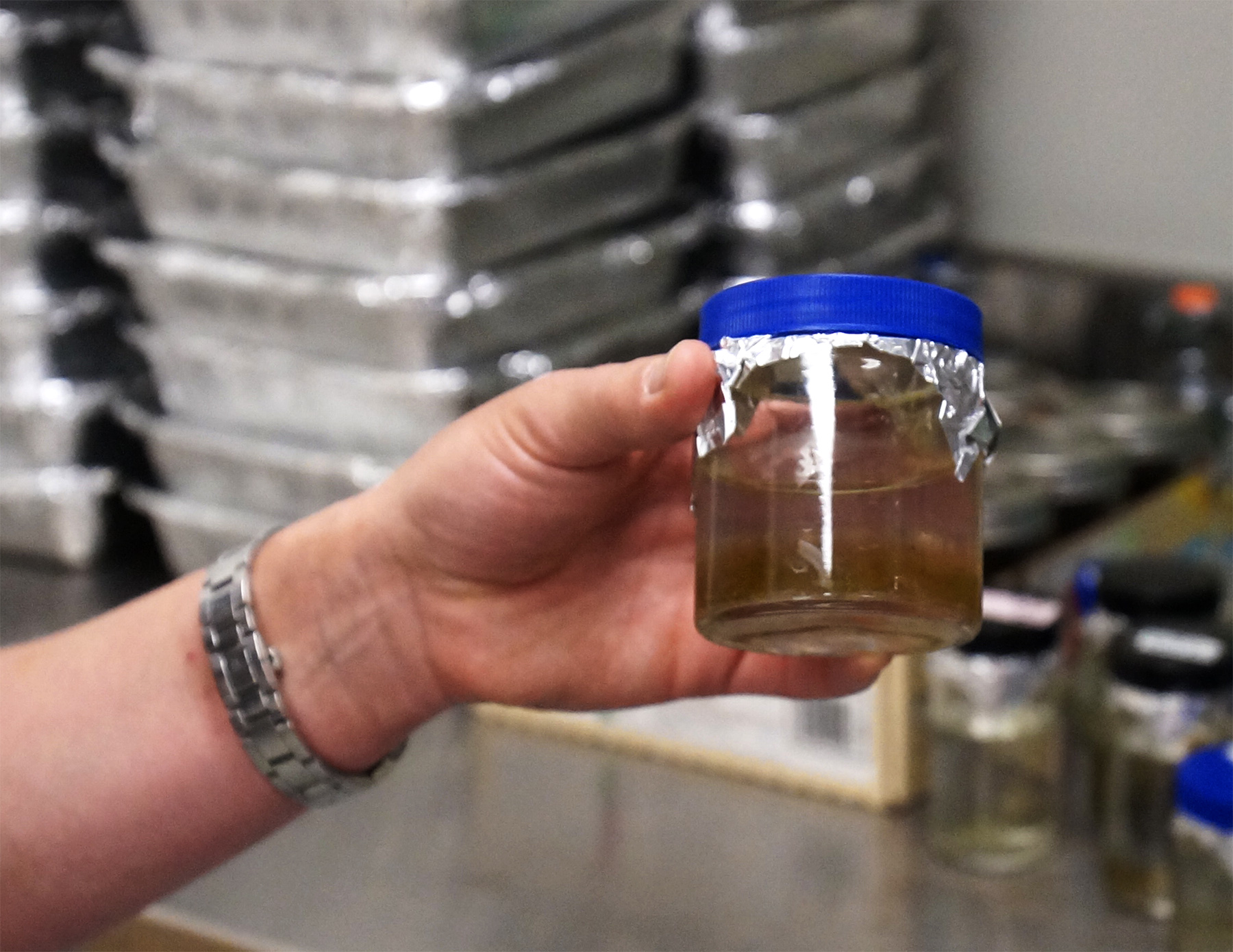Lena's Labors Logged
Story by Naomi Hutchquist and Cassidy Phillips, Alaska NSF EPSCoR

Fire & Ice Coastal Margins researchers have been collecting and sorting samples of marine life from Juneau and Kachemak Bay since 2019. But what happens to the samples once they make it into the lab? On a rainy day in June, members of the Fire & Ice comms team paid a visit to the Lena Point Fisheries facility in Juneau, where University of Alaska Southeast undergraduates Preslee Chase, Grace Ham, and Mali Tamone were hard at work turning samples into science.

Chase, a fourth-year undergraduate, is studying the diets of snails and limpets. Her experiment consists of six tackle-box-sized containers in a running current of seawater. Each container is broken into thirty cells, with each cell alternately housing a snail or a limpet collected from each of the EPSCoR research sites in Juneau and Kachemak Bay. The snails and limpets are being fed fucus, a seaweed that is abundant in both regions. By examining their diets, Chase hopes to determine why snails and limpets collected from Kachemak Bay appear to be larger than those from Juneau.

Ham’s project also takes advantage of samples collected from Fire & Ice research sites in Juneau and Kachemak bay. The UAS sophomore-to-be who is examining the shell strength and attachment strength of Pacific blue mussels from in each area. When the mussel samples were collected, a force gauge was used to measure the amount of upward force required to remove them. In the lab, Ham is using the same tool to apply downward pressure against the mussel and measure the force required to break through the shell. She’s tracking how these numbers differ across research sites with different levels of glacial coverage, to test the hypothesis that the amount of freshwater input will affect shell strength and adhesion for creatures that rely on the chemistry of the ocean to build their shells and adhere to rocks.

Fourth-year UAS undergrad Mali Tamone is studying a very different aspect of nearshore food webs: contamination by microplastics. Tamone collected samples of fucus from sites chosen for their proximity to human activities. Each sample was stored in a glass or aluminum container to minimize interaction with plastics, then run through a 1 micron filter and examined under a microscope to look for microplastics. The objects she’s looking for are less than five millimeters long, and can include fragments that have sloughed off of larger plastic objects, fibers from synthetic clothing, and exfoliant beads used in cosmetics. The goal of this project is to examine whether fucus adheres to microplastics in the wild in order to better understand to what degree microplastics might be found in the food web.
The three projects are funded by both EPSCoR and the UA Biomedical Learning and Student Training (BLaST) program. The data collected from the projects will continue to fill in gaps in understanding about how the dynamic coastal margins along the Gulf of Alaska play into the larger ecosystem and the food web that supports life in this region.

